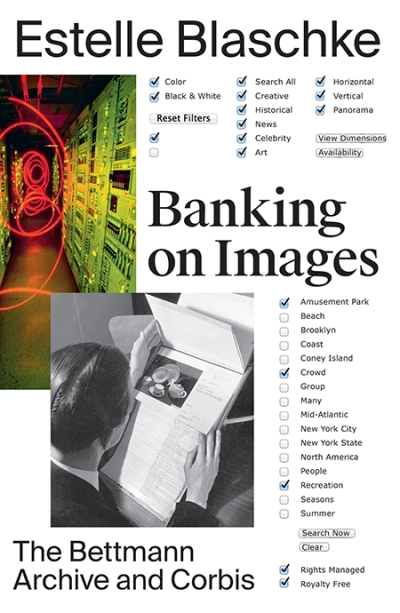
Banking on Images. From the Bettmann Archive to Corbis
Die Rolle der Bildagenturen ist ein blinder Fleck in der Geschichtsschreibung der Fotografie. Entstanden zu Beginn des 20. Jahrhunderts um den „Bildhunger des modernen Menschen“ (Tschichold) zu bedienen, verwandelten sie Fotografien in eine industrielle Ware. Als Katalysatoren der Bildproduktion und durch die Investition in systematische Sammlungen formten sie die westliche, visuelle Kultur. In den 1920er, 1930er und 1990er Jahren fanden Paradigmenwechsel in der Ökonomie des Mediums statt, die durch bedeutende technische Fortschritte und die Etablierung neuer Absatzmärkte gekennzeichnet sind. Am Beispiel des Bettmann Archives und Corbis – eine der weltweit größten Bildagenturen von Bill Gates gegru¨ndet – geht das Buch „Banking on Images“ den Fragen nach, welche Auswahlkriterien fu¨r Bilder dort angewendet werden, wie man den Wert einer kommerziellen „Bild-Bank“ bestimmt und welche Konzepte der Fotografie dahinter stehen.
The role of photo agencies remains a blind spot in the history of photography. Emerging in the beginning of the 20th century to “satisfy the picture-hunger of modern man” (Tschichold), they transformed photography into a commodity. As catalysts for the picture market and through the creation of systematic collections, these companies shaped our western visual culture. The 1920s, 1930s and 1990s, in particular, ushered a paradigm shift in the economy of the medium, marked by major technological developments and the rise of new markets. Taking the example of the Bettmann Archive and Corbis – one of the world’s largest photo agencies, founded by Bill Gates – the book “Banking on Images” inquires into the criteria used in selecting these images, the way in which the value of a commercial “image bank” is determined, and the concept of photography that lies behind it.

































































































